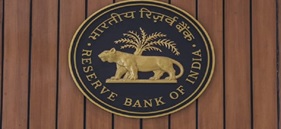08 December, 2025
Reserve Bank of India’s Financial Inclusion Index (FI-Index) 2025
Fri 08 Aug, 2025
Background:
- The Reserve Bank of India (RBI) released the Financial Inclusion Index (FI-Index) for the year ending March 2025, which stood at 67.0, showing a 4.3% increase compared to 64.2 in March 2024.
Key Highlights:
Improvement in Sub-Indices:
- All three sub-indices (Access, Usage, and Quality) showed growth.
- Notably, significant progress was observed in the Usage and Quality dimensions, indicating deeper engagement with financial products and services and increased financial literacy impact.
Major Components of FI-Index:
The FI-Index is based on three major parameters:
1. Access (35% weightage):
- Measures availability of financial services like bank branches, ATMs, digital payment platforms, insurance, and pension schemes.
- In 2025, improvements in access were driven by expansion of banking services and digital infrastructure in rural and semi-urban areas.
2. Usage (45% weightage):
- Measures actual use of financial services such as regular transactions in bank accounts, digital payments, insurance policy purchases, and investments.
- The rise in usage in 2025 is mainly attributed to increased digital transactions (e.g., UPI) and growing adoption of financial products, especially in rural areas.
3. Quality (20% weightage):
- Measures financial literacy, consumer protection, and equality and effectiveness of services.
- Improvement in financial literacy campaigns and consumer awareness strengthened this parameter.
Key Drivers of Progress:
Expansion of Digital Financial Services:
- Unified Payments Interface (UPI) and other digital platforms have made financial transactions easier and more accessible across rural and urban areas.
- Growing participation of fintech companies has enhanced availability of digital payment apps, promoting cashless transactions.
Impact of Government Schemes:
- Pradhan Mantri Jan Dhan Yojana (PMJDY): 54.58 crore bank accounts opened till January 2025, holding deposits worth ₹2.46 lakh crore.
- Pradhan Mantri Jeevan Jyoti Bima Yojana (PMJJBY): 22.52 crore enrollments, ₹17,600 crore paid in 8.8 lakh claims.
- Pradhan Mantri Suraksha Bima Yojana (PMSBY): Covered 49.12 crore people, ₹2,994.75 crore disbursed in accident claims.
- Atal Pension Yojana (APY): 7.33 crore enrollments including 89.95 lakh new registrations in FY 2024-25.
- Pradhan Mantri Mudra Yojana (PMMY): ₹32.36 lakh crore loans approved with 51.41 crore beneficiaries; 68% women and 50% SC/ST/OBC beneficiaries.
- Stand-Up India Scheme: ₹53,609 crore loans approved for 2.36 lakh entrepreneurs.
Financial Literacy and Education:
- RBI’s Financial Literacy Centre (CFL) project and the National Strategy for Financial Education (2020-2025) have boosted financial awareness.
- Rural literacy campaigns have helped improve understanding and trust in financial services.
Expansion in Rural Areas:
- Expansion of banking networks and improvement in digital infrastructure in rural and small towns enhanced access to financial services.
Importance of Financial Inclusion:
Financial inclusion is vital for India’s economic and social progress. The rise in FI-Index offers several benefits:
- Economic Empowerment:
Access to credit, savings, and insurance services promotes entrepreneurship and economic growth.
- Achievement of Sustainable Development Goals (SDGs):
Supports 7 of the 17 SDGs, including poverty eradication, gender equality, and economic growth.
- Women’s Empowerment:
Schemes like PMMY and Stand-Up India link women to financial services, boosting their economic independence.
- Climate Change and Disaster Management:
Provides financial stability to individuals and businesses to cope with natural disasters and climate impacts.
- Economic Stability:
Greater inclusion in formal financial systems enhances economic stability and reduces dependence on informal finance.
Financial Inclusion Index (FI-Index)
- The FI-Index is an annual composite index released by RBI to measure the progress of financial inclusion in India.
- It covers all formal financial sectors like banking, insurance, pensions, investments, and postal services.
Inception:
- RBI introduced the FI-Index in August 2021 for the first time.
- The index is measured on a scale of 0 to 100:
-
- 0 = Complete financial exclusion
- 100 = Complete financial inclusion
Structure:
- The FI-Index is based on three main components:
- Access (35%) – Availability of financial services
- Usage (45%) – Actual usage of these services
- Quality (20%) – Service quality, financial literacy, and consumer protection
Data Sources:
- Data is collected from government and private agencies including RBI, Securities and Exchange Board of India (SEBI), Pension Fund Regulatory and Development Authority (PFRDA), Insurance Regulatory and Development Authority of India (IRDAI), and the Department of Posts.
Reserve Bank of India (RBI) Overview
| Parameter | Details |
| Established | 1 April 1935 under RBI Act, 1934 |
| Nationalization | 1949 |
| First Governor | Sir Osborne Smith (1935–1937) |
| First Indian Governor | C.D. Deshmukh (1943–1949) |
| Headquarters | Mumbai, Maharashtra |
| Currency Issuance | Sole authority under Section 22 of RBI Act |
| Monetary Policy Committee (MPC) | Formed in 2016 to set repo rates and control inflation |
| Repo Rate | Rate at which RBI lends to commercial banks |
| Cash Reserve Ratio (CRR) | Percentage of deposits banks must keep with RBI |
| Statutory Liquidity Ratio (SLR) | Percentage of net demand and time liabilities banks must maintain in liquid assets |


















